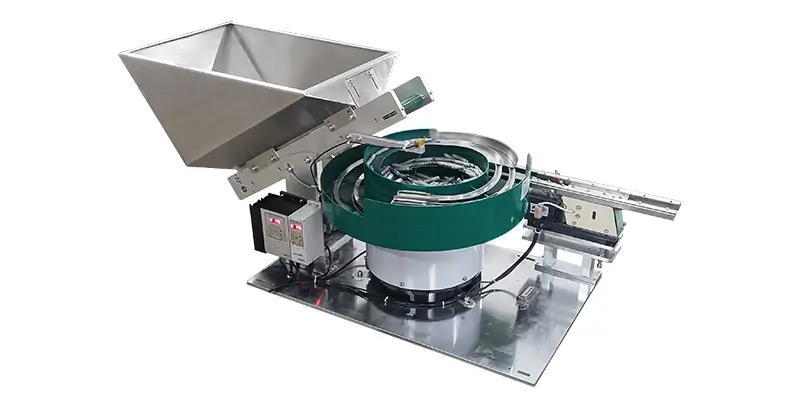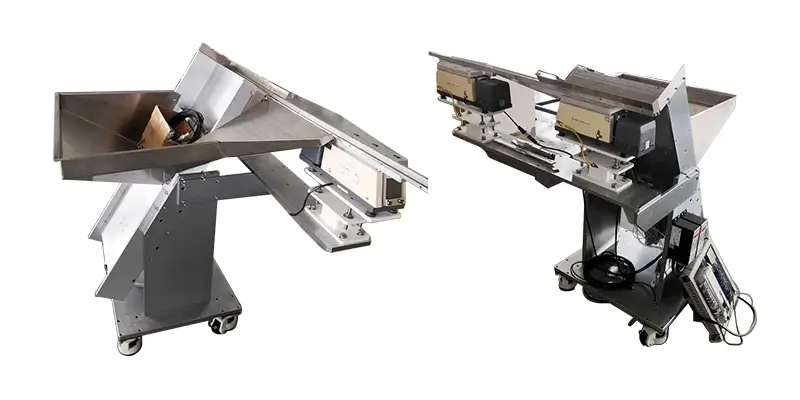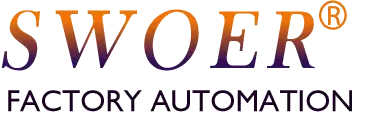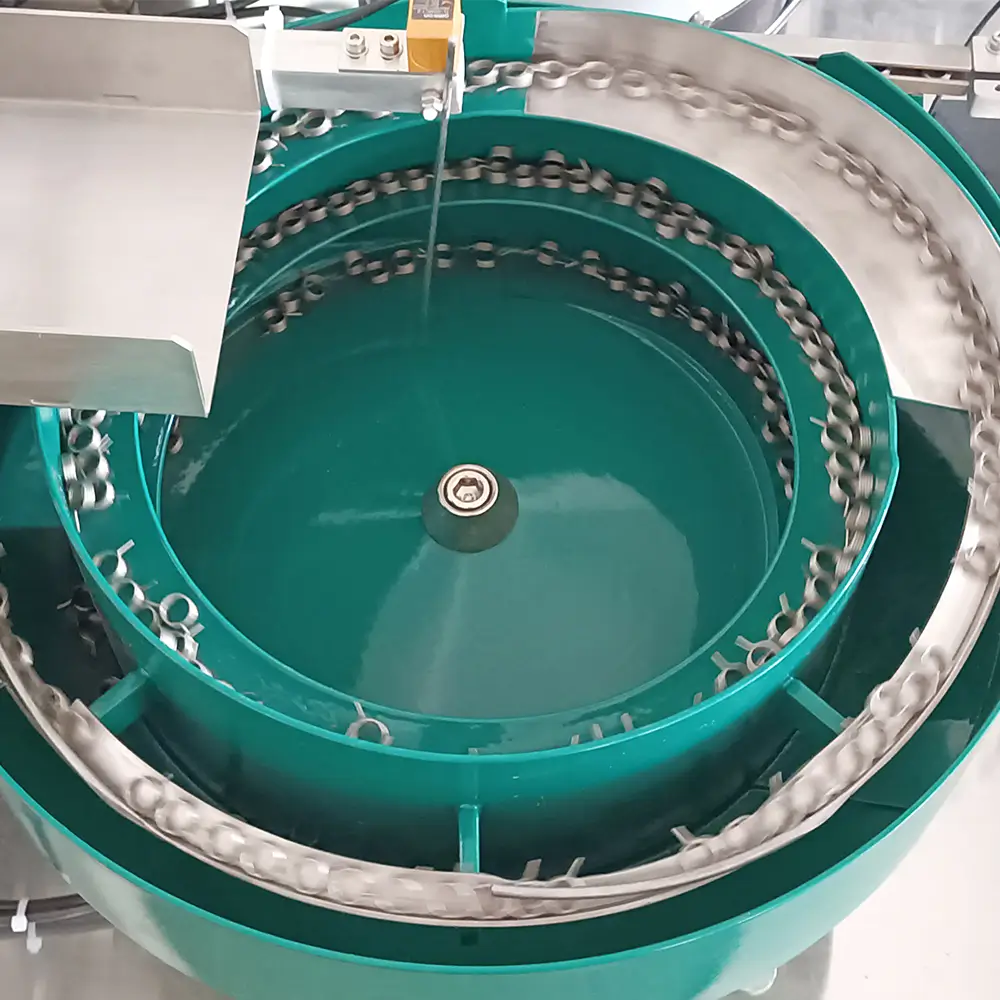Kontur
- Sanoat avtomatizatsiyasida ehtiyot qismlarni oziqlantiruvchilarning umumiy ko'rinishi.
- Yig'ish liniyalari va ishlab chiqarish jarayonlaridagi ahamiyati.
- Ta'rif va asosiy funktsiya.
- Oziqlantiruvchi qismlarning turlari: kirish.
A. Vibratsiyali oziqlantiruvchilar
- Vibratsiyali oziqlantiruvchilarni tushuntirish.
- Umumiy ilovalar va imtiyozlar.
B. Vibratsiyali piyola oziqlantiruvchilar
- Vibratsiyali piyola oziqlantiruvchilarning tavsifi.
- Qanday qilib ular qismlarni saralaydi va yo'naltiradi.
C. Oziqlantiruvchilarning boshqa turlari
- Santrifüj oziqlantiruvchilar va pog'onali oziqlantiruvchilar haqida qisqacha ma'lumot.
- Avtomobil sanoati
- Vibratsiyali oziqlantiruvchilarning avtomobillarni yig'ishdagi roli.
- Elektron ishlab chiqarish
- Kichik qismlarga ishlov berishning ahamiyati.
- Farmatsevtika sanoati
- Qadoqlash va tarqatishda foydalaning.
- Samaradorlik va samaradorlikni oshirish.
- Qo'lda ishlov berish va xatolarni kamaytirish.
- Ehtiyot qismlarni yo'naltirish va etkazib berish.
- Ishlab chiqaruvchilarni tanlashda asosiy e'tibor.
- Maxsus yechimlarning ahamiyati.
- Zamonaviy ishlab chiqarishda qismlarni oziqlantiruvchilarning ahamiyati haqida qisqacha ma'lumot.
- Vibratsiyali oziqlantiruvchining asosiy vazifasi nima?
- Vibratsiyali piyola oziqlantiruvchi qanday ishlaydi?
- Qaysi sohalar odatda qismlarni oziqlantiruvchilardan foydalanadi?
- Vibratsiyali oziqlantiruvchilar nozik qismlarga ishlov bera oladimi?
- Ilovam uchun to'g'ri qismlarni oziqlantiruvchini qanday tanlashim mumkin?
I. Kirish
Sanoatni avtomatlashtirish sohasida qismlarni oziqlantiruvchilar yig'ish jarayonlarini soddalashtirishda muhim rol o'ynaydi. Ushbu qurilmalar komponentlarni samarali tarzda tashiydi va saralaydi, bu esa turli ishlab chiqarish sozlamalarida silliq ish jarayonini ta'minlaydi. Sanoat tobora ko'proq avtomatlashtirishga tayanar ekan, ishlab chiqarish liniyalarini optimallashtirish uchun ehtiyot qismlarni oziqlantiruvchilar, xususan, tebranishli oziqlantiruvchilar va tebranish idishni oziqlantiruvchilarning funktsiyalari va turlarini tushunish zarur bo'ladi. Ushbu maqola ehtiyot qismlarni oziqlantiruvchilarning turli jihatlarini o'rganadi, ularning ahamiyati, qo'llanilishi va ishlab chiqaruvchini tanlashda e'tiborga olinadi.
II. Ehtiyot qismlar oziqlantiruvchi nima?
Ehtiyot qismlarni oziqlantiruvchi avtomatlashtirilgan tizimlar bo'lib, katta hajmdagi komponentlarni qayta ishlashga mo'ljallangan bo'lib, ularni ishlab chiqarish muhitida ma'lum bir yo'nalishda birma-bir etkazib beradi. Ularning asosiy vazifasi qismlarni samarali harakatlantirish va keyingi ishlov berish uchun to'g'ri yo'naltirilganligini ta'minlashdir. Qo'lda ishlov berishni qisqartirish orqali qismlarni oziqlantiruvchilar ishlab chiqarish samaradorligini sezilarli darajada oshiradi va ularni zamonaviy yig'ish liniyalarida ajralmas qiladi.
Har xil turdagi qismlar oziqlantiruvchilar mavjud bo'lib, ularning har biri muayyan ilovalar va talablar uchun mo'ljallangan. Ular orasida vibratsiyali oziqlantiruvchilar va tebranish kosasi oziqlantiruvchilari eng keng tarqalgan bo'lib, turli sohalarga mos keladigan noyob afzalliklarni taklif qiladi.

III. Ehtiyot qismlarni oziqlantiruvchi turlari
A. Vibratsiyali oziqlantiruvchilar
Vibratsiyali oziqlantiruvchilar tebranish yordamida qismlarni yo'l bo'ylab harakatlantirish, barqaror va boshqariladigan oqimni ta'minlaydi. Ular ko'p qirrali bo'lib, kichik vintlardek kattaroq komponentlargacha bo'lgan keng turdagi materiallarga ishlov bera oladi. Uzluksiz harakat va sozlanishi tebranish sozlamalari ishlab chiqaruvchilarga oziqlantirish tezligini o'z ehtiyojlariga qarab sozlash imkonini beradi. Umumiy ilovalar avtomobil yig'ish va qadoqlash jarayonlarida oziqlantiruvchi komponentlarni o'z ichiga oladi.
B. Vibratsiyali piyola oziqlantiruvchilar
Vibratsiyali idish oziqlantiruvchilar vibratsiyali oziqlantiruvchining maxsus turi hisoblanadi. Ular bir yo'nalishda qismlarni yo'naltirish va oziqlantirish uchun tebranadigan piyola shaklidagi idishdan iborat. Ushbu dizayn, ayniqsa, aniq yo'nalishni talab qiladigan kichik, murakkab komponentlar uchun samarali. Tebranish va tortishish kombinatsiyasidan foydalangan holda, tebranish idishni oziqlantiruvchi qismlarni samarali saralashi va etkazib berishi mumkin, bu ularni elektronika va farmatsevtika kabi sohalarda mashhur tanlovga aylantiradi.
C. Oziqlantiruvchilarning boshqa turlari
Vibratsiyali oziqlantiruvchilar va piyola oziqlantiruvchilar keng tarqalgan bo'lsa-da, boshqa turdagi oziqlantiruvchilar ham avtomatlashtirishda rol o'ynaydi. Santrifüj oziqlantiruvchilar, masalan, qismlarni oziqlantirish uchun aylanish harakatidan foydalaning, esa qadam oziqlantiruvchilar vertikal ko'tarish mexanizmini ta'minlang. Har bir turning o'ziga xos ilovalari va afzalliklari bor, bu ishlab chiqaruvchilarga o'zlarining maxsus ehtiyojlari uchun eng yaxshi echimni tanlash imkonini beradi.

IV. Ehtiyot qismlar oziqlantiruvchilarning qo'llanilishi
A. Avtomobilsozlik sanoati
Avtomobil sanoatida vibratsiyali oziqlantiruvchilar yig'ish paytida turli qismlarga ishlov berish uchun zarurdir. Ular qismlarni to'g'ri yo'nalishda va kerakli tezlikda etkazib berishni ta'minlash orqali jarayonlarni soddalashtiradi, bu esa unumdorlikni saqlash va yig'ish vaqtini qisqartirish uchun juda muhimdir.
B. Elektronika ishlab chiqarish
Elektron ishlab chiqaruvchilar elektron platalar va ulagichlar kabi kichik, nozik qismlarga ishlov berishni osonlashtirish uchun vibratsiyali oziqlantiruvchilardan keng foydalanadilar. Ularning mayda qismlarni aniqlik bilan boshqarish qobiliyati shikastlanish xavfini kamaytiradi va ishonchli yig'ishni ta'minlaydi.
C. Farmatsevtika sanoati
Farmatsevtika sanoati dori-darmonlarni qadoqlash va tarqatish kabi vazifalarni bajarish uchun qismlarni oziqlantiruvchilarga tayanadi. Vibratsiyali oziqlantiruvchilar operatorlarga planshetlar va kapsulalarni to'g'ri yo'naltirish va etkazib berishni ta'minlaydi, samaradorlikni oshiradi va sanoatning qattiq qoidalariga rioya qiladi.
V. Qismlarni oziqlantiruvchilardan foydalanishning afzalliklari
Ehtiyot qismlarni oziqlantiruvchilar ishlab chiqarish jarayonlarini yaxshilaydigan bir qator afzalliklarga ega.
- Samaradorlik va mahsuldorlikni oshirish: Qismlarga ishlov berishni avtomatlashtirish orqali ishlab chiqaruvchilar yuqori o'tkazuvchanlikka va aylanish vaqtini qisqartirishga erishishlari mumkin.
- Qo'lda ishlov berish va xatolarni kamaytirish: Ehtiyot qismlarni oziqlantiruvchilar qo'lda aralashuvga bo'lgan ehtiyojni kamaytiradi, xatolar ehtimolini kamaytiradi va xavfsizlikni yaxshilaydi.
- Ehtiyot qismlarni yo'naltirish va etkazib berish:Vibratsiyali oziqlantiruvchilarning aniq tabiati ular qismlarni doimiy ravishda yo'naltirishini ta'minlaydi, bu avtomatlashtirilgan yig'ish jarayonlari uchun juda muhimdir.
VI. To'g'ri vibratsiyali oziqlantiruvchi ishlab chiqaruvchini tanlash
ni tanlashda a vibratsiyali oziqlantiruvchi ishlab chiqaruvchi, siz bir nechta omillarni hisobga olishingiz kerak. Muayyan ilovalarga moslashtirilgan maxsus echimlarni taklif qiladigan kompaniyalarni izlash juda muhimdir. Bundan tashqari, ishlab chiqaruvchining tajribasi, obro'si va qo'llab-quvvatlash xizmatlarini baholash sizning avtomatlashtirish harakatlaringiz muvaffaqiyatiga sezilarli ta'sir ko'rsatishi mumkin.
VII. Xulosa
Xulosa qilib aytadigan bo'lsak, ehtiyot qismlar oziqlantiruvchilar, xususan, tebranishli oziqlantiruvchilar va tebranish idishni oziqlantiruvchilari avtomatlashtirish landshaftidagi muhim komponentlardir. Ularning ehtiyot qismlarni samarali boshqarish va yo‘naltirish qobiliyati avtomobilsozlikdan tortib farmatsevtikagacha bo‘lgan turli sohalarda samaradorlikni oshiradi. Ishlab chiqaruvchilar avtomatlashtirishni qo'llashda davom etar ekan, ehtiyot qismlarni oziqlantiruvchi rolini tushunish tobora muhim ahamiyat kasb etmoqda. To'g'ri vibratsiyali oziqlantiruvchi ishlab chiqaruvchini tanlash ishlab chiqarish jarayonlarini optimallashtirish va kerakli natijalarga erishishda sezilarli farq qilishi mumkin.
VIII. Tez-tez so'raladigan savollar
Vibratsiyali oziqlantiruvchining asosiy vazifasi qismlarni avtomatik ravishda tashish va yo'naltirish, yig'ish yoki qayta ishlash uchun to'g'ri etkazib berishni ta'minlashdir.
Vibratsiyali piyola oziqlantiruvchi tebranish va tortishish kuchini idish shaklidagi idish ichida qismlarni siljitish, saralash va quyi oqim jarayonlari uchun yo'naltirish uchun ishlatadi.
Avtomobilsozlik, elektronika va farmatsevtika kabi sohalarda ehtiyot qismlarni oziqlantiruvchi qurilmalardan keng foydalaniladi, bu erda komponentlarni aniq ishlatish va yo'naltirish juda muhimdir.
Ha, dizaynerlar nozik qismlarga yumshoq ishlov berish uchun tebranish oziqlantiruvchilarini yaratishi mumkin, bu esa tashish paytida shikastlanish xavfini kamaytiradi.
To'g'ri oziqlantiruvchi qismlarni tanlash uchun qismlarning o'lchami va shakli, kerakli oziqlantirish tezligi va maxsus ishlov berish talablari kabi omillarni hisobga oling. Tajribali ishlab chiqaruvchilar bilan maslahatlashish eng yaxshi echimni aniqlashga yordam beradi.

